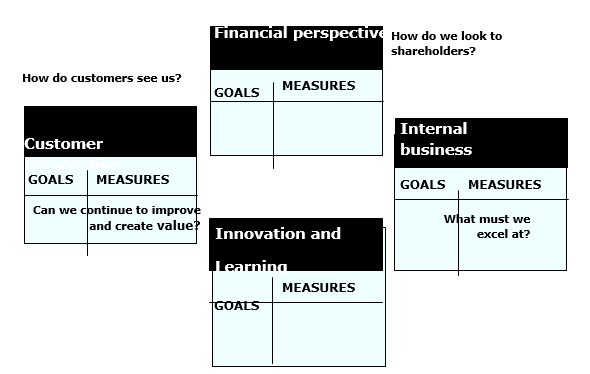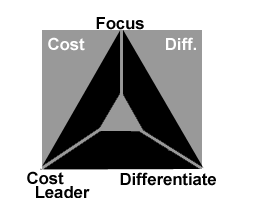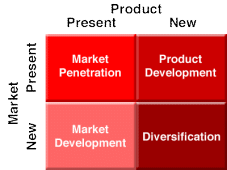Company description
To understand the history of Nike golf, a little background of the Nike Company is essential. Nike Golf is a business unit of Nike Incorporated., a sportswear and equipment manufacturing company based in the US. Nike is currently the largest manufacturer and supplier of sports equipment for different sports. Nike’s products are marketed under the Nike brands as well as Nike Pro, Nike Golf, Air Jordan, Nike +, Nike Skateboarding as well as its subsidiaries such as Hurley International, Cole Haan, Converse, and Umbro (Worth & Park, 2007).
The Nike Golf subsidiary was founded in 1996 when the marketing executives of the Nike incorporated met at Beaverton, Ore campus to discuss a new sponsorship task. Already by that time, Nike had a well-established sponsorship in two of the biggest sports in the USA, the National Basketball Association (NBA) and the National Football League (NFL) (Worth & Park, 2007). The marketing executives were torn between sponsoring the Brazilian soccer team, the New Zealand all blacks rugby team, and a young golfer known as Tiger Woods. A decision was agreed to sign a multimillion-dollar deal with Tiger Woods.
Thus, Nike Golf was born and started on a capital of 120 million dollars that was based on footwear sales and apparel. Slowly the company established a sponsorship at the club level while increasing its manufacturing equipment to include the golf balls. By 2007, eleven years after establishment Nike Golf’s capital stood at 600 million dollars 2007(Worth & Park, 2007).
SWOT Analysis
The SWOT analysis profile of the organization sheds light on the following situations involving the business and strategies of the organization.
- Strengths: Nike does not have any factories. The biggest advantage with it is that it does not engage money in buildings. The company has a powerful research & development center. This plays a vital role as new and innovative products are developed by Nike. Also, a big asset for the organization is the production of high-quality goods at the lowest possible price. Nike has a global appeal. It is the number one sports brand in the world. (“SWOT Analysis Nike, Inc.”, 2009).
- Weakness: The earnings of the organization are heavily dependent on the share of the footwear market. The overall diversified range of sports products gets neglected because of the heavy dependence on the food market. The retail sector of the company is very price sensitive. Although Nike does have a retailer in Nike town most of its earnings are obtained by selling to its retailers. (“SWOT Analysis Nike, Inc.”, 2009).
- Opportunity: Nike has used product development, and this presents many growth opportunities. Developing products such as sportswear, sunglasses & jewellery can create value for the organization. These kinds of items always tend to associate high profits for the organization. Nike targets various developing nations. Since it carries a global appeal country with high disposable income of the mass should be targeted. Also, global marketing events such as the Olympics and World Cup (soccer) must be capitalized on by the company. (“SWOT Analysis Nike, Inc.”, 2009).
- Threats: the many threats arises from international trade because of the currency exchange fluctuations. Day by day the competition is becoming extensive in segments of sports shoes & garments. Competitors are a cost leadership strategy to take away the market share of Nike. Since the retail sector is becoming price competitive customers are getting a better deal for themselves. Consumer sensitivity towards price can be a threat to the organization. (“SWOT Analysis Nike, Inc.”, 2009).
The above is the SWOT analysis of an organization focusing on the Nike golf Company and the opportunities it has for the development of its business. The weakness of the company along with the potential threats it may face in business has also been identified to help the company integrate its business for future improvement.
Thus from the above discussion, it can be stated that the SWOT analysis is one of the most helpful techniques determining the situation and trend of the market served by the particular organization and it is the basis of the next step of developing the vision, mission, and goals of the organization. The mission statement developed based on the SWOT profile is followed by the determination of goals and objectives for a long-term basis. The short-term strategies and responsibilities to achieve that established goal are made to be specific, measurable, attainable, rewarding, and timely (SMART). The tactics set to address the day-to-day tasks are made in a detailed fashion aimed at achieving the final goal and the financial projections are also included in the plan to develop the business in the desired direction (Hilty, n.d.).
Balanced scorecard
A balanced scorecard is a strategic performance management tool for assessing whether the smaller-scale operational activities of a firm are in terms of the large-scale objectives as far as vision and strategy are concerned. By emphasizing operational, financial, marketing, and as well as developmental issues, the Balanced Scorecard assists in offering a more detailed view of a business which is important in aiding the firms to work in their long-term interests. The tool is also being used to handle the issue of business response to changes in the environment and the production of greenhouse gases. Firms are advised to evaluate the factors which control their final outputs and not the financial outputs alone (Pearce, & Robinson, 2004).
Factors that control financial inputs in a firm include process performance, market share penetration, and long-term learning and skills enhancement exhibited by the firms. A well constructed and effective scorecard balances both the short and long-term events of a firm, financial and non-financial components, and internal and external performance viewpoint of the firm. The Balanced Scorecard is then used by the management of an organization as the main organizing framework for the entire firm (Pearce, & Robinson, 2004). The following is the balanced scorecard;

The Balanced Scorecard as a comprehensive approach for performance measurement and management has been developed by Kaplan and Norton at the Harvard Business School since the early 1990s (Kaplan and Norton 1996). In addition to the integration of financial and non-financial measures in a comprehensive measurement system, the BSC is a strategic management system that emphasizes a strong link between performance measures with business unit strategy (Kaplan and Norton 1996). Moreover, satisfying the different needs of various stakeholders is a major strength of this technique as a multi-stakeholder approach). Some years ago, following its widespread diffusion in the private sector, the BSC has begun to diffuse to the public sector organizations.
Critical Success Factors
Nike golf enjoys a number of favorable factors. The long-term success of the company entails the consolidation of those favorable factors while focusing upon and overcoming the weaknesses. The company must continue with the following that ensured its success in the past.
Generic Strategies
It is believed that the best method of running a firm is by translating the firm’s mission statement into a holistic statement of its strategic orientation to describe the particular long-term strategies. To find a competitive advantage, the firm should base its long term plans on generic strategies such as pushing for overall low-cost leadership in the industry, creation of unique commodities for the various groups of clients in the market through differentiation, and also establishing a special appeal to one or more groups of clients in the market by emphasizing on their costs or differentiation methods (Porter, 1980).
To maintain its vision of being recognized as the best provider of personal relief stress services to American families, Nike golf Company has to focus on its business values which are also vital in creating a competitive advantage for the firm. These are also important in realizing both the short-term and long-term objectives of the firm.
The key business values for the company which include customer service excellence, integrity, and community and environment must be integrated into the formulation of the Balanced Scorecard for it to be influential in the achievement of the objectives of the firm. As a strategy to be competitive in the market and achieve its objectives, Nike golf Company is dedicated to offering dependable services to clients and honoring the commitments that have been made to them (Porter, 1980).
The firm takes pride in its work and employs the highest ethical standards in every action. In addition to striving to care for the communities living around the firm’s locality, Nike golf Company takes care of the environment by promoting the use of recyclable products. This is aimed at controlling or preventing pollution of the environment. Each of the generic strategies mentioned above and the business values are important to the firm. The generic strategies have been utilized to achieve the overall objectives of the firm as outlined by the following analysis.

- Overall Cost Leadership: To achieve this, the firm must have a constant capital investment and access to funds. It must possess excellent process engineering expertise and have intense control of labor. The firm should also have a low-cost distribution system. These will assist the firm in realizing its financial objectives which include growth in sales and revenue and increasing its financial resources to expand a business. The firm is expected to have a tight cost control enhanced frequent and detailed control reports. The firm should be structured in terms of responsibility and the incentives should be based on meeting specific quantitative targets (Porter, 1980). Nike golf Company has achieved this by expanding its level of internet usage on sales and marketing. It has also developed and implemented a broad capital financial plant that encompasses private partnership, federal and private funding.
- Differentiation: – The firm should possess strong selling abilities, product engineering expertise, and creative flair. It must invest in research and adopt a corporate reputation for quality or technological leadership. The firm should be in a position to combine all the above skills effectively to have a competitive advantage in the market. These are supported by having strong coordination among the factions in R&D, product development, and marketing. The firm should also have proper amenities that attract highly qualified and talented personnel. These assist the firm in realizing its customer-based objectives such as exceeding client expectations and offering reliable and timely services (Porter, 1980).
- Focus:- The firm should have a proper combination of all the above policies which are aimed at achieving both long term and short-term objectives of the firm (Porter, 1980).
The Ansoff Growth matrix is a tool that helps businesses decides their product and market growth strategy.

- Strong market position
- Robust financial performance
- Product development
- Strong focus on innovation
The company has done well to establish the permanent goal of 30 percent growth, and all its activities must be geared to this end through thick and thin. The company can make the best use of available opportunities to further its advantages.
Evaluation of the organization
It would be of mutual benefit for both the golf companies and the golf equipment consumers to continue with their research and innovation practice. When newer and better products are made the demand goes up and the revenue generated increases. To the consumers, the competition stabilizes the prices such that the product becomes affordable. For Nike to curve a niche in the club manufacture it should provide clubs not just made from iron and wood but also composites and then compete at different prices with other companies. In this way, it would start a new era of making clubs to specifications and therefore golfers would give such products a try. By so doing each company takes their product to a higher level.
The company went on from strength to strength to grow ever bigger, stronger, and more profitable. Today, the company is perched on a high growth trajectory winning the confidence of its investors. The company is among the top ten players in the industry riding high on its philosophy of helping and connecting to millions of customers the company has. The other strong point of the company is coming out with solutions to golf sport in the form of marketable innovations. Notwithstanding the weak revenue game, the company is optimistic about its long-term growth.
Apart from the U.S market, the company has made a significant presence in the global markets. The company has partnered with or acquired other companies to come out with better and more state-of-the-art products in the frontier areas.
Nike is also slowly and gradually reaching out globally and is hopeful of its recent foray into the Indian market.
In evaluating the companies’ strategies, SAF analysis will be used.
List of References
Blocher, E.J., Stout, D., Cokins, G., & Chen, K.H. (2006) Cost Management: A Strategic Emphasis (4th ed). Boston: McGraw Hill. Web.
Pearce, J., & Robinson, R. (2004). Strategic Management. New York: The McGraw-Hill Companies.
Porter, M. (1980). Techniques for Analyzing Industries and Competitors. New York: Free press.
SWOT Analysis Nike, Inc.,” 2009. Marketing Teacher. Web.
Worth, F & Park, A. (2007). Global business: Members of the Club. Times Magazine. Web.
Young, R. (2005). Bob Wood: Nike Golf’s synergistic president. Web.
